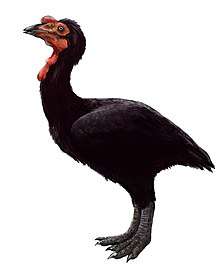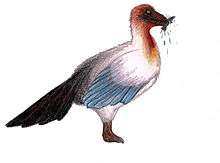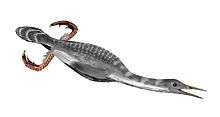Enantiornis
Enantiornis is a genus of enantiornithine birds. The type and only currently accepted species E. leali is from the Late Cretaceous Lecho Formation at El Brete, Argentina. It was described from specimen PVL-4035, a coracoid, proximal scapula and proximal humerus found close to each other and suspected to represent the left shoulder of one individual bird.[1]
| Enantiornis | |
|---|---|
| Scientific classification | |
| Kingdom: | Animalia |
| Phylum: | Chordata |
| Clade: | †Enantiornithes |
| Order: | †Enantiornithiformes Martin 1983 |
| Family: | †Enantiornithidae Nesov 1984 |
| Genus: | †Enantiornis Walker 1981 |
| Species: | †E. leali |
| Binomial name | |
| †Enantiornis leali Walker 1981 | |
Description
This group gets their name from how significantly they differ from modern birds and the hesperornithids that were their contemporaries: Enanti "opposite", ornis is "bird".[2]
Another left shoulder and wing, almost complete and found associated in one lump of rock, as well as a few isolated bones were also assigned to this species mainly based on size. It is among the largest enantiornithine birds discovered to date, with a length in life of around one meter (excluding tail), and its ecological niche resembled that of a mid-sized vulture or eagle.
E. leali was possibly fairly closely related to Avisaurus, another genus of probably carnivorous enantiornithines, though its exact relationship is unclear. It is placed in a family of its own, Enantiornithidae. Other species from Asia that were previously placed in this genus are now split off. The former Enantiornis martini is now placed in Incolornis, while the former Enantiornis walkeri is now tentatively assigned to Explorornis. The reasons for this are that these birds were described when the diversity of enantiornithine birds was underestimated.
As no hindlimb elements are known from Enantiornis, it might include one of the El Brete enantiornithines known only from leg bones, namely Lectavis, Soroavisaurus or Yungavolucris. However, these apparently were all smaller birds. Hindlimb material tentatively assigned to Martinavis and Elbretornis seems somewhat and a lot too small, respectively, to represent Enantiornis.[3]
References
- Walker, C.A. (1981) New subclass of birds from the Cretaceous of South America. Nature 292:51–53.
- New subclass of birds from the Cretaceous of South America
- Cyril A. Walker & Gareth J. Dyke (2009). "Euenantiornithine birds from the Late Cretaceous of El Brete (Argentina)" (PDF). Irish Journal of Earth Sciences. 27: 15–62. doi:10.3318/IJES.2010.27.15. Archived from the original (PDF) on 2012-03-20.
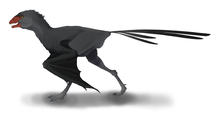
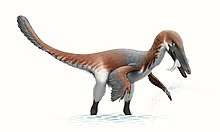
.png)
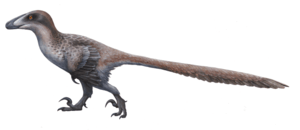

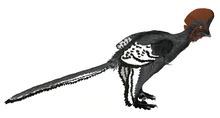
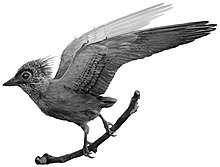

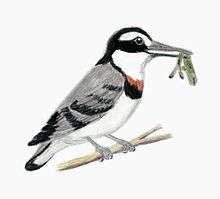
.png)
